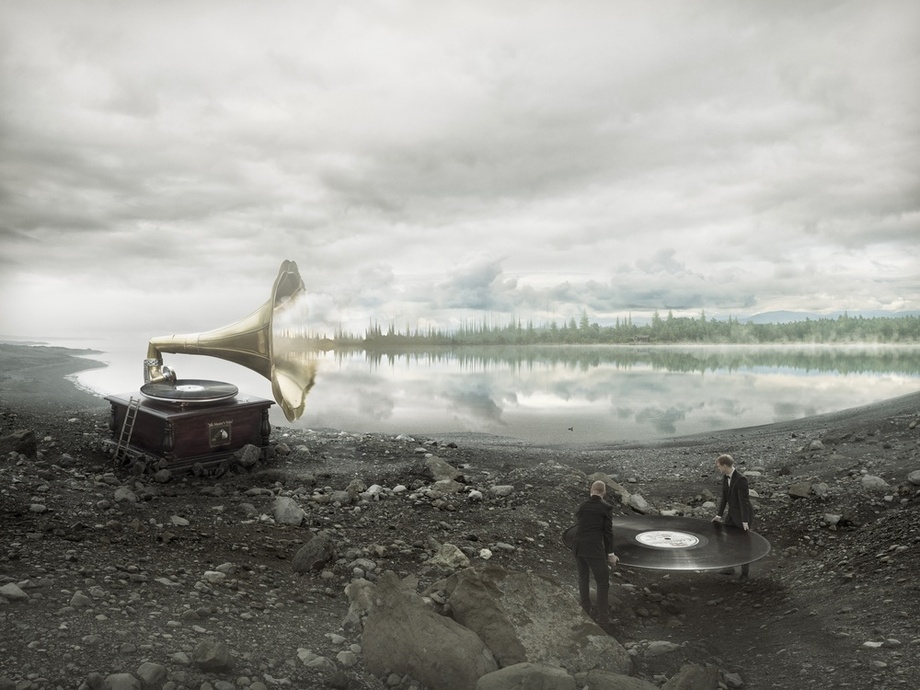Could sound be a form of art?
Art is open to our own interpretation and it is based on our knowledge and experiences, in particular memories. Good art should be challenging and question our perceptions of both ourselves and the world that we inhabit, and even change them. Experiencing sound can have the same impact as pictures hanging in a gallery and over the years I have gathered a number of sounds, including songs, that have opened my ears to wider appreciation of of a sonic landscape.
Chris Watson, one of the world’s leading recorders of wildlife and natural phenomena, remains a constant source for going beyond sound. In the following clip entitled Winter, he creates the sonic environment of the Holy Island as it might have been experienced by St. Cuthbert in 700 A.D.( It is best to listen to this and all of the rest of the selected tracks through headphones or loudly through speakers ). Towards the end of the piece you can hear the distant ring of a prayer bell which pulls you through the space filled with the sound of the wildlife, and the cold wind, towards Holy Island and its spiritual life.
Sometimes a recording of the natural world captures more than was expected. On May 19 1942, three years into World War Two, the BBC was planning to broadcast the song of nightingales. During the recording they captured the sound of bombers flying overhead on their way to raids in Mannheim.
The nightingales song, which is part of their mating strategy, and signals the continuation of life, is juxtaposed with the drone of the bombers as they pass over on their deadly mission symbolises questions of life and death.
Music
Stockhausen is regarded one of the greatest composers of the 20th century, but listening to any of his work for the first time it can seem incomprehensible: full of electronic squeaks, chopped up voices fading in and out, and no sign of a a melody. But perseverance can bring great rewards!
In Stockhuasen’s Gesang der Jünglinge ( Song of the Youths ), which is taken from the apocryphal Bible text “Song of the Three Youths in the Fiery Furnace”, in which youths are tossed into a fire by King Nebuchadnezzar, but are rescued by an angel due to their faith-based song, he explores the optimism and energy of youth.
It is interesting to note that this is one of Paul McCartney’s favourite pieces which influenced his early career.
Stockhausen’s influence can still be heard today. In Oneohtrix Point Never’s Chrome Country, a track with a title that could point to a landscape lacquered in mirror we hear a mix of sounds bursting with childlike voices, drifting through rapid piano sounds and builds to an organ sound which is like the triumphant end of a High Mass.
Of course the richness of the human voice to express something beyond music is beyond doubt. One of the best examples is Meredydd Evans, who was collector, editor, historian and performer of folk music of Wales written in the Welsh language. Although I am not a welsh speaker, in Robin Ddiog ( Lazy Robin ) in his voice we can ‘see’ the cheekiness a robin sitting inside a house and asking us to open the door slightly so that he can see the sea:
Sometimes a choir can catch a the strength of a community that goes beyond the everyday and in the Treorchy Welsh Male Voice Choir’s version of When I Survey The Wonderous Cross. I have never been down a mine but their deep, low voices seems to sweep up from its depths into the bright sunlight:
I find that the clips above, and many more that have not been included, go beyond their original purpose, whether it is the melody and harmony of a song or recording the detail of natural world, to catch something that is difficult to express - is that art ?
